Poetry and Figurative Language Worksheet
Poetry is a rich source of figurative language. Though there are examples of figurative language to be found in all genres of literature, perhaps none more than in poetry. Good poets pack worlds of meaning into tiny little lines. These lines evoke emotions, thoughts, and at times social change. One of the ways that poets perform these linguistic miracles is with the use of figurative language. This page contains a selection of poems that I find to be rich with figurative language.
Each poem also includes a sampling of comprehension, inference, review, and discussion questions, so that they are ready for classroom use. Learn more about how I study figurative language in the classroom with my figurative language lesson and unit plans.
Figurative Language Poem 2: 'I Sing the Battle'
There is often a naive and jubilant rush to battle before wars begin. A sobering reality check comes after the horrors are unleashed. Harry Kemp expresses this dynamic exquisitely in this short poem. He uses an interesting rhetorical technique and it contains many examples of figurative language. Suggested reading level for this text: Grade 5-9.
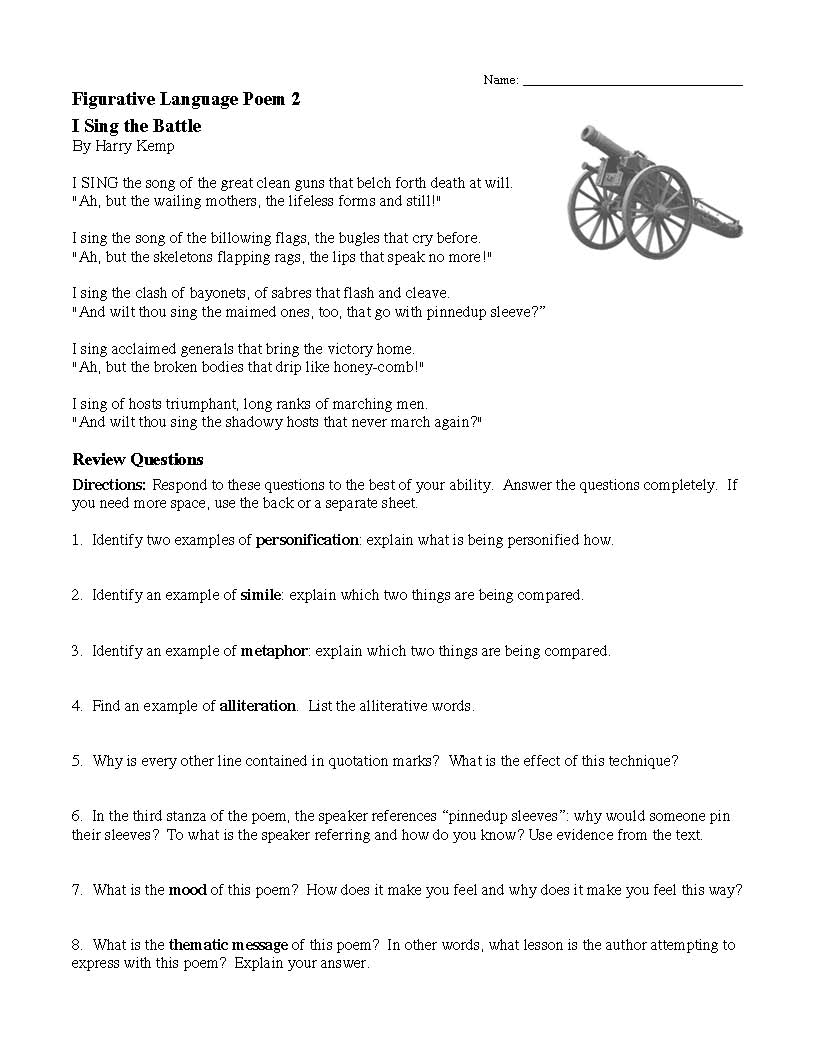
Figurative Language Poem 3: 'The Grave'
This poem by Robert Blair gives readers a wry interpretation of life and death. It uses simile, metaphor, personification, hyperbole, and the tone of the poem is an intriguing centerpiece of discussion. Suggested reading level for this text: Grade 6-10.
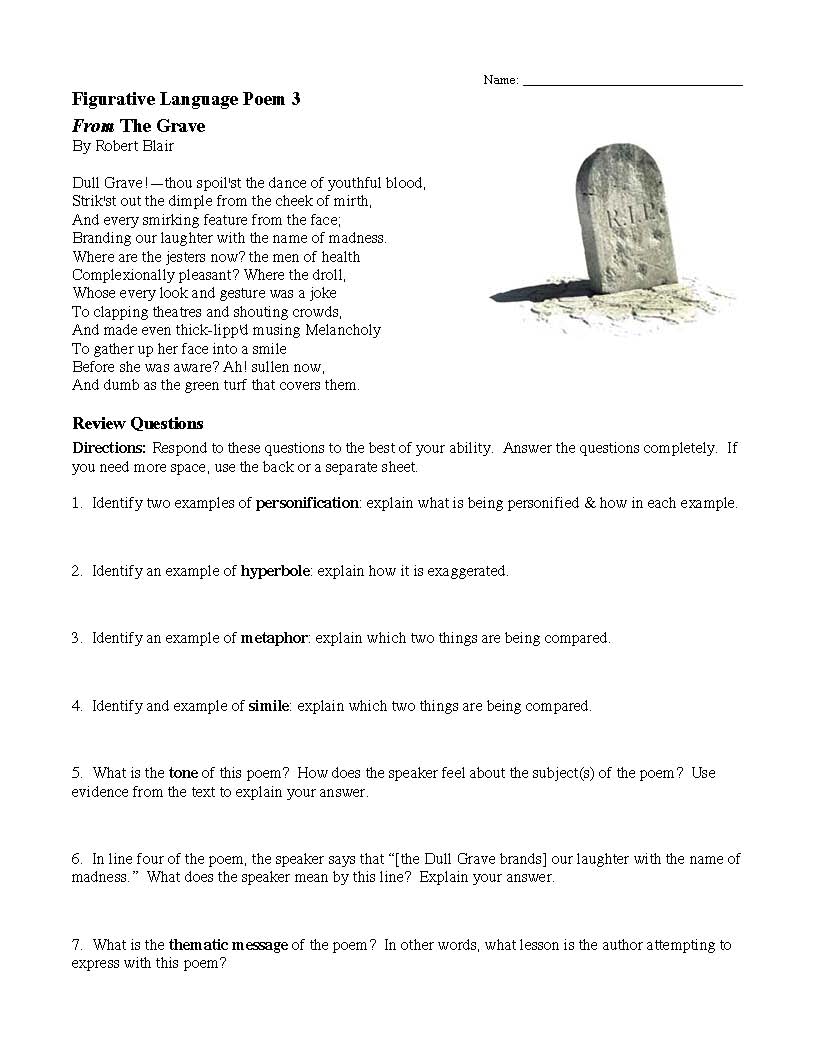
Figurative Language Poem 4: 'The Dawn's Awakening!'
This poem was written by African American poet Otto Leland Bohanan around the time of the Harlem Renaissance. It expresses the power and beauty of a sunrise as it clears away darkness. This poems uses personification, metaphor, hyperbole, and some great imagery. There are also an interesting moment in the poem where the tone shifts and suggests something more. Suggested reading level for this text: Grade 5-9.

Figurative Language Poem 5: 'Sleep'
This poem by Annie Matheson describes the beauty of nature as night descends over a summer day. It is packed full of figurative language! Metaphors, similes, some beautiful imagery, and at least five examples of personification. This is a great poem to study if you're teaching personification. Suggested reading level for this text: Grade 9-13
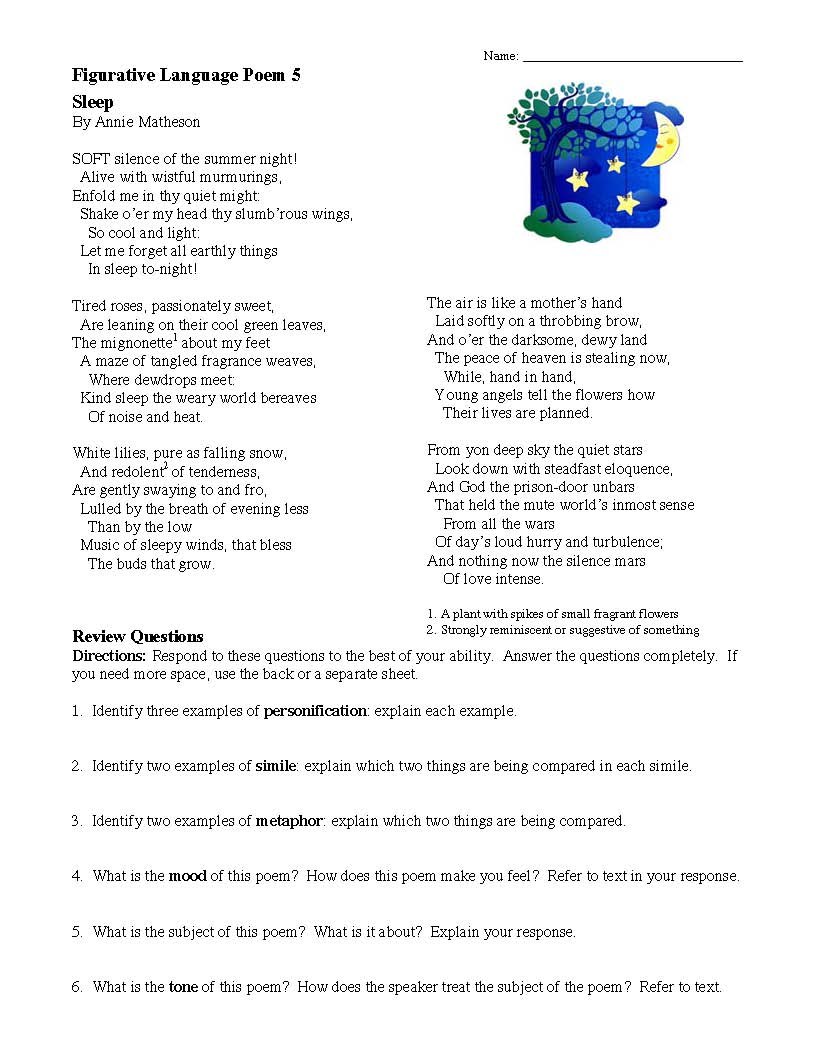
Figurative Language Poem 6: 'X' and 'XXI'
Emily Dickinson wrote these two poems about books. They compliment one another really well. They contain examples of personification, metaphor, and alliteration. They also promote literacy. Suggested reading level for this text: Grade 8-12
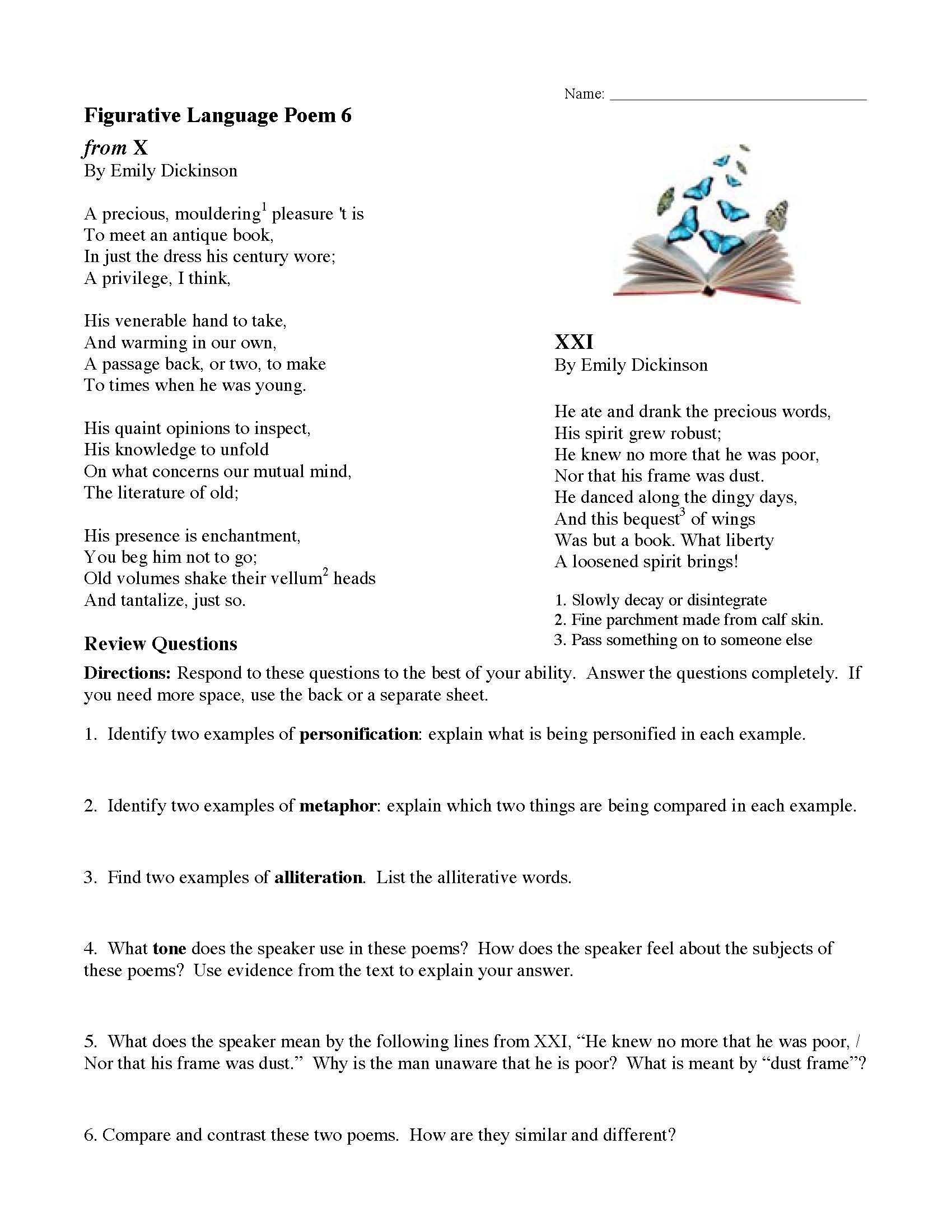
Figurative Language Poem 7: 'A Lady'
This poem written by Amy Lowell describes an interaction between a young woman and an old woman. It is written from the perspective of the young woman. There are some winding and well-crafted instances of figurative language in this piece. Suggested reading level for this text: Grade 6-10.
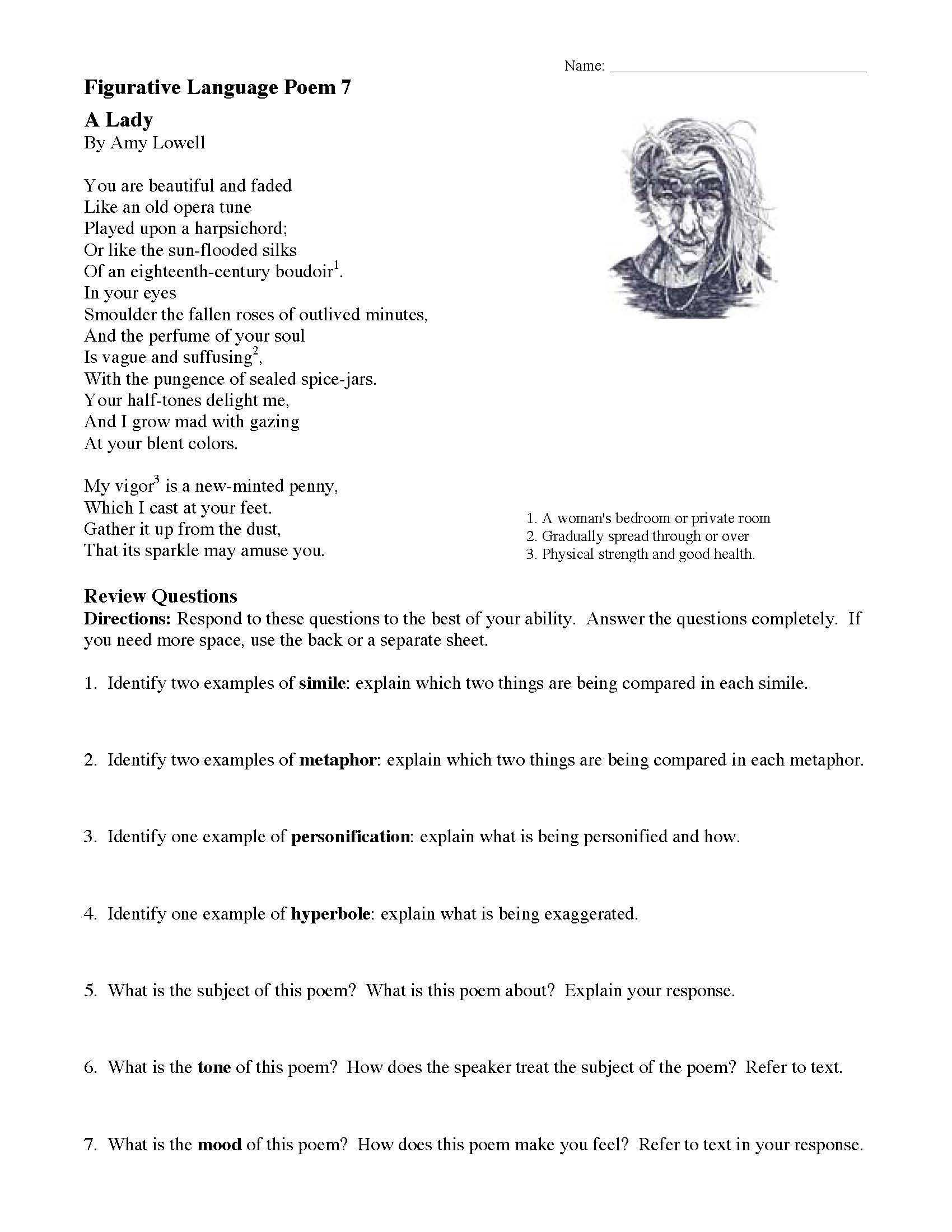
Figurative Language Poem 8: 'The Black Land'
This poem written by Joseph Warren Beach describes a farmer as he tills the land. It contains some interesting uses of metaphor, personification, and simile. Suggested reading level for this text: Grade 3-7.
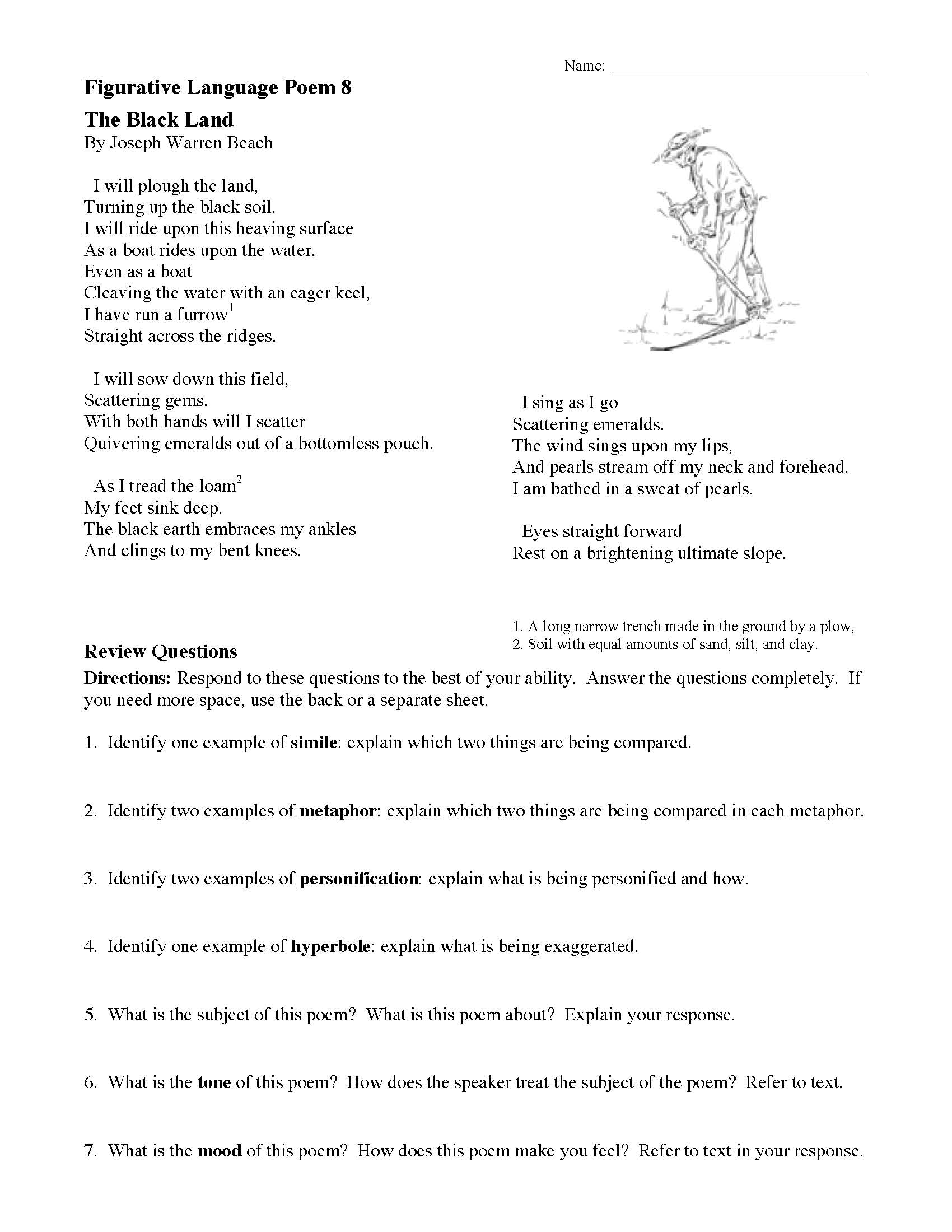
Figurative Language Poem 9: 'Operating Room'
This poem written by John Reed deals with subject matter that may be grim or unsettling to some readers. It is about a hospital operating room and a man who awakens to find that he has lost the use of his legs. The poem is chilling, but wonderfully written. It uses simile, metaphor, and hyperbole. Suggested reading level for this text: Grade 9-13.
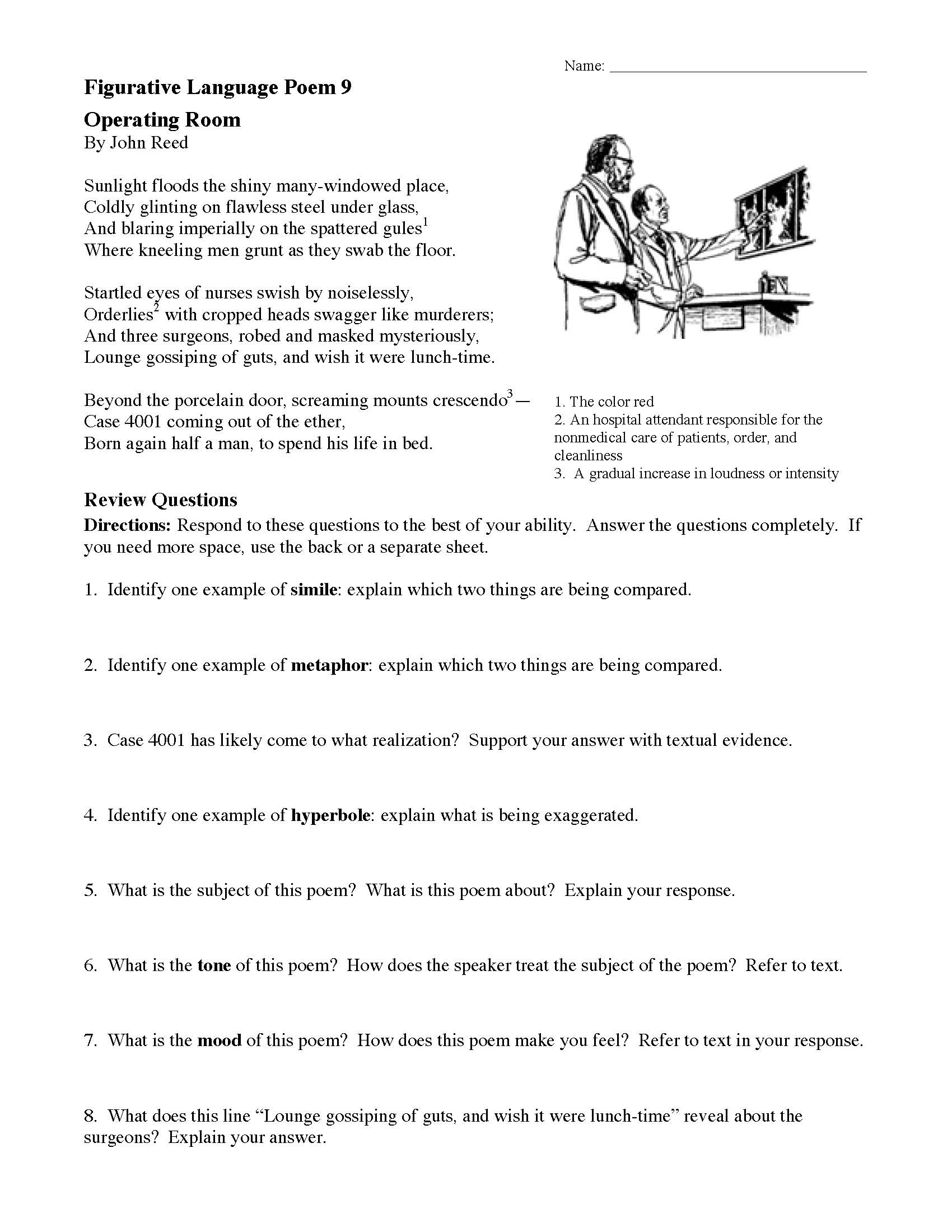

Figurative language makes poetry come alive.
Common Core State Standards Related to Figurative Language
Anchor Standards
CCSS.ELA-Literacy.CCRA.R.4 – Interpret words and phrases as they are used in a text, including determining technical, connotative, and figurative meanings, and analyze how specific word choices shape meaning or tone.
CCSS.ELA-Literacy.CCRA.L.5 – Demonstrate understanding of figurative language, word relationships, and nuances in word meanings.
View All Common Core State Standards Related to Figurative Language
ELA Standards: Literature
CCSS.ELA-Literacy.RL.3.4 – Determine the meaning of words and phrases as they are used in a text, distinguishing literal from nonliteral language.
CCSS.ELA-Literacy.RL.4.4 – Determine the meaning of words and phrases as they are used in a text, including those that allude to significant characters found in mythology (e.g., Herculean).
CCSS.ELA-Literacy.RL.5.4 – Determine the meaning of words and phrases as they are used in a text, including figurative language such as metaphors and similes.
CCSS.ELA-Literacy.RL.6.4 – Determine the meaning of words and phrases as they are used in a text, including figurative and connotative meanings; analyze the impact of a specific word choice on meaning and tone.
CCSS.ELA-Literacy.RL.7.4 – Determine the meaning of words and phrases as they are used in a text, including figurative and connotative meanings; analyze the impact of rhymes and other repetitions of sounds (e.g., alliteration) on a specific verse or stanza of a poem or section of a story or drama.
CCSS.ELA-Literacy.RL.8.4 – Determine the meaning of words and phrases as they are used in a text, including figurative and connotative meanings; analyze the impact of specific word choices on meaning and tone, including analogies or allusions to other texts.
CCSS.ELA-Literacy.RL.9-10.4 – Determine the meaning of words and phrases as they are used in the text, including figurative and connotative meanings; analyze the cumulative impact of specific word choices on meaning and tone (e.g., how the language evokes a sense of time and place; how it sets a formal or informal tone).
CCSS.ELA-Literacy.RL.11-12.4 – Determine the meaning of words and phrases as they are used in the text, including figurative and connotative meanings; analyze the impact of specific word choices on meaning and tone, including words with multiple meanings or language that is particularly fresh, engaging, or beautiful. (Include Shakespeare as well as other authors.)
ELA Standards: Language
CCSS.ELA-Literacy.L.3.5 – Demonstrate understanding of figurative language, word relationships and nuances in word meanings.
CCSS.ELA-Literacy.L.4.5a – Explain the meaning of simple similes and metaphors (e.g., as pretty as a picture) in context.
CCSS.ELA-Literacy.L.4.5b – Recognize and explain the meaning of common idioms, adages, and proverbs.
CCSS.ELA-Literacy.L.5.5a – Interpret figurative language, including similes and metaphors, in context.
CCSS.ELA-Literacy.L.5.5b – Recognize and explain the meaning of common idioms, adages, and proverbs.
CCSS.ELA-Literacy.L.6.5a – Interpret figures of speech (e.g., personification) in context.
CCSS.ELA-Literacy.L.7.5a – Interpret figures of speech (e.g., literary, biblical, and mythological allusions) in context.
CCSS.ELA-Literacy.L.8.5a – Interpret figures of speech (e.g. verbal irony, puns) in context.
CCSS.ELA-Literacy.L.9-10.5a – Interpret figures of speech (e.g., euphemism, oxymoron) in context and analyze their role in the text.
CCSS.ELA-Literacy.L.11-12.5a – Interpret figures of speech (e.g., hyperbole, paradox) in context and analyze their role in the text.
View Source
Common Core Lesson and Unit Plans
Understanding Common Core State Standards
Related Content
Still looking for something?
Search here.
Poetry and Figurative Language Worksheet
Source: https://www.ereadingworksheets.com/figurative-language/figurative-language-poems-with-questions/